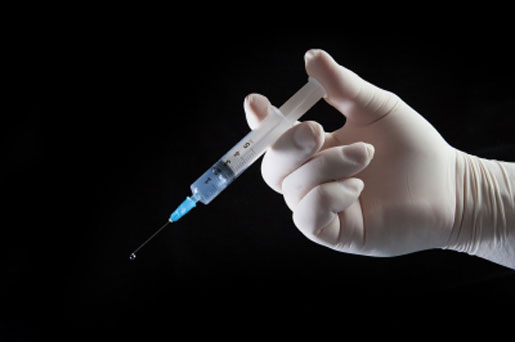Here's How to Reduce Friction in Drug-Delivery Devices
Low-friction, smooth movement is important for drug-delivery devices, but current materials and design don't optimize this feature. Here's why friction matters and what manufacturers can do to reduce it.
July 5, 2016

Friction may not be the first problem we think of afflicting medical device design, but it is a real issue for many single-use medical devices like syringes, injection pens, and auto-injectors. Too-high friction can impact the delivery of a drug, resulting in the patient receiving a spurt of the drug or a smaller than intended dose. As specialty compounder RTP Company pointed out in a white paper, "You only get one shot at using [the device]."
Devices are often designed to use an external lubricant like silicone fluid in order to ensure smooth, low friction operation. But according to RTP Company, "these secondary operations can add significant cost, difficult clean up procedures, and additional quality inspections to ensure lubricant is applied correctly." The company sees internally lubricated plastics as a more ideal solution.
With this in mind, a team at RTP Company began investigating friction in single-use medical devices and couldn't find a standard test to measure startup friction or a description of friction behavior for plastic-on-plastic applications. "There really was nothing out there in the industry focusing on friction in single-use delivery devices," said Ben Gerjets, product development engineer at RTP Company.
So, a team at RTP Company set about creating a new friction test, using this to determine which resins perform best. The company published its tribological findings--tribology includes the study of friction--in a white paper titled, "Low Friction Plastic Technology for Single-Use Drug Delivery Devices." The database is being used to help customers learn more about potential solutions to the friction problem.
Start planning your fall schedule now. Register for the MD&M Minneapolis Conference, September 21-22. RTP will be exhibiting at Booth #1711 in the Expo Hall. |
RTP Company used a modified version of a thrust washer machine test to vary pressure and rotating velocity to determine the start-up static and dynamic friction of plastic-on-plastic pairings. The delta between static friction and dynamic friction was termed "Glide Factor," meaning a low Glide Factor was preferred.
Gerjets explained, "The method uses an oscillation movement and we combined that with specific conditions that are commonly seen in single-use devices to replicate the performance of different plastic-aginst-plastic friction pairings." The team also used as-molded parts to simulate that these single-use devices were brand new out of their packaging, he added.
The team tested three internal lubricants that were compounded into thermoplastic material: silicone fluid in multiple viscosities, perfluoropolyether (PFPE) fluid, and its own All Polymeric Wear Alloy (APWAPLUS). These additives were compounded with polycarbonate (PC), high density polyethylene (HDPE), polyoxymethylene (POM), polybutylene terephthalate (PBT), polycarbonate-acrylonitrile butadiene styrene (PC-ABS), and ABS.
Ideally, a resin pair will have friction coefficients (static and dynamic) below 0.15 as well as a Glide Factor (the delta between the two friction coefficients) less than or equal to 0.015. It turns out that the best performance came from pairs of dissimilar resins compounded with internal lubricants but in same resin pairings, internal lubrication can yield sufficiently low friction. Of course, unlubricated same resin pairing had the highest friction.
RTP Company concluded that depending on force and speed, its optimized silicone viscosity blend "has very good average performance" across the tested resin. APWAPLUS also showed good performance, especially in same resin pairings. PFPE performed well for some pairings.
With single-use drug-delivery devices, "there's a lot of trial and error when it comes to designing them, and oftentimes that can lead to malfunctions and inconsistent performance," Gerjets said. "The goal was to come up with a guide to help [manufacturers] select materials to eliminate that trial and error." He explained that the purpose of the study and white paper was to get device manufacturers thinking more about friction and "spark some different thoughts and conversations or considerations that hadn't been in previous device designs."
Still, these findings don't mean the friction problem is an easy one to solve. Gerjets urged manufacturers to come to suppliers early. "The sooner that we get involved in the design process, the better . . . Friction is a very complex property that can depend on a lot of different things. You don't want to overlook it in these types of devices."
[Image courtesy of DANILO RIZZUTI/FREEDIGITALPHOTOS.NET]
About the Author(s)
You May Also Like

.png?width=300&auto=webp&quality=80&disable=upscale)
